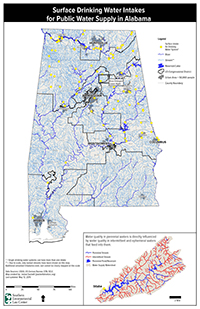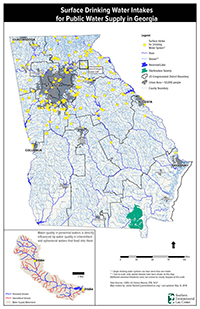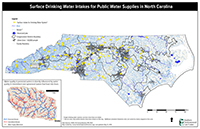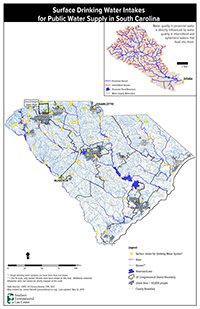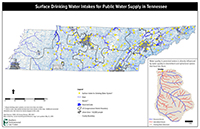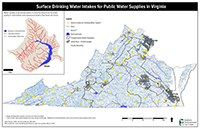EPA rule would lift pollution risk on drinking water for 20 million Southerners, 117 million in U.S.
After more than a year of soliciting scientific input and public comments, a final version of the Corps and EPA’s clean water rule is expected soon.
However, several recent attempts by members of Congress to block the rule could jeopardize its outcome before it is even finalized. This week, the House passed HR 1732, a bill that would essentially terminate the current rulemaking.
Halting this process so close to its finalization puts many drinking water sources in the Southeast at risk, as new SELC maps demonstrate.
At issue are important protections for smaller water sources, known as intermittent and ephemeral streams. While these smaller types of waters have generally received equal protections under the Clean Water Act, there has been rampant confusion about what waters are covered. The EPA and the Corps aimed to use the rulemaking process to clarify these definitions, an important task since these smaller water bodies feed into and supply larger streams that are home to many drinking water intakes. In fact, a scientific review shows these water sources feed drinking water intakes for 117 million people nationwide, and these sources are at risk without a strong rule in place.
For SELC’s six state region, these protections affect the drinking water quality of 20 million people:
- 2.7 million Alabamians get their drinking water from water that is supplied, at least in part, by water sources currently at risk for pollution.
- 4.9 million Georgians get their drinking water from water that is supplied, at least in part, by water sources currently at risk for pollution.
- 4.7 million North Carolinians get their drinking water from water that is supplied, at least in part, by water sources currently at risk for pollution.
- 1.9 million South Carolinians get their drinking water from water that is supplied, at least in part, by water sources currently at risk for pollution.
- 3.5 million Tennesseans get their drinking water from water that is supplied, at least in part, by water sources currently at risk for pollution.
- 2.3 million Virginians get their drinking water from water that is supplied, at least in part, by water sources currently at risk for pollution.
Click on SELC’s maps below to see the drinking water intakes and their sources in your state.
Alabama (click to view larger PDF)
Georgia (click to view larger PDF)
North Carolina (click to view larger PDF)
South Carolina (click to view larger PDF)
Tennessee (click to view larger PDF)
Virginia (click to view larger PDF)

